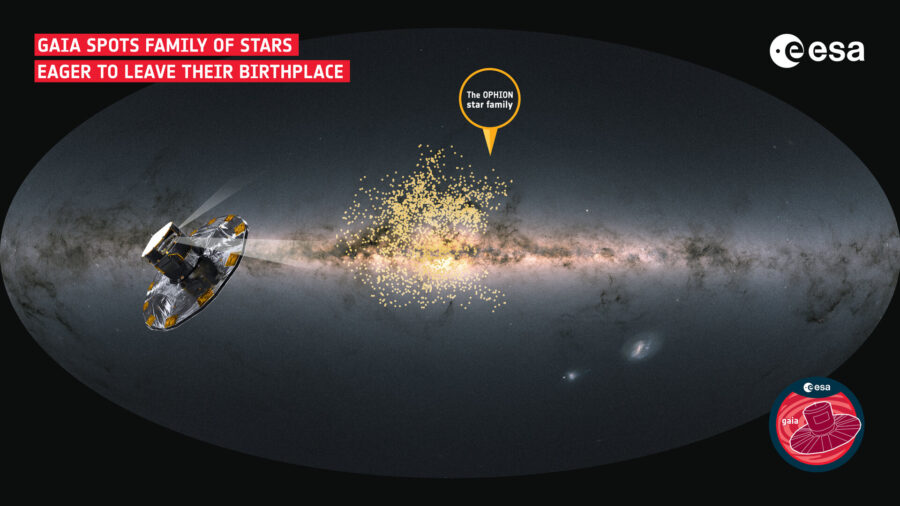Astronomers have discovered an unusual cosmic family drama playing out 650 light-years away, where over 1,000 young stars are behaving in ways that challenge our understanding of stellar evolution.
The European Space Agency’s Gaia space telescope has identified a massive group of stars, dubbed “Ophion,” that’s breaking up at an unprecedented pace and in a completely chaotic manner – something astronomers didn’t think was possible for star families of this size.
“Ophion is filled with stars that are set to rush out across the galaxy in a totally haphazard, uncoordinated way, which is far from what we’d expect for a family so big,” explains Dylan Huson of Western Washington University, lead author of the discovery paper. “What’s more, this will happen in a fraction of the time it’d usually take for such a large star family to scatter. It’s like no other star family we’ve seen before.”
Stars typically form in clusters, with similar stars being born in the same region around the same time. While smaller groups can dissipate completely, larger families usually move in coordinated patterns and travel together for billions of years. Ophion defies this expectation, with its members scattering in all directions at high velocities despite being less than 20 million years old – mere infants in stellar terms.
To make this discovery, researchers developed a new model called Gaia Net that analyzed spectroscopic data from hundreds of millions of stars. This innovative approach allowed them to identify young, low-mass stars that previous methods couldn’t detect.
“This is the first time that it’s been possible to use a model like this for young stars, due to the immense volume and high quality of spectroscopic observations needed to make it work,” notes Johannes Sahlmann, ESA Gaia Project Scientist.
The discovery highlights how Gaia’s unprecedented mapping capabilities are transforming our understanding of the Milky Way. The telescope, which ceased operations in March after more than a decade of observations, has been systematically measuring the positions, movements, and characteristics of nearly two billion stars with unprecedented precision.
What caused Ophion’s unusual behavior remains a mystery. The research team proposes several possibilities: the star family resides near other massive star gatherings, and interactions between these cosmic neighbors may have influenced Ophion’s development. Evidence also suggests that past supernova explosions in the region could have swept away material and caused Ophion’s stars to move more erratically.
“We don’t know exactly what happened to this star family to make it behave this way, as we haven’t found anything quite like it before. It’s a mystery,” says co-author Marina Kounkel of the University of North Florida.
The discovery challenges astronomers’ methods for identifying star families. Traditional approaches look for stars that move together in coordinated patterns, but Ophion’s chaotic motion means it would have been missed by these techniques.
“Without the huge, high-quality datasets from Gaia, and the new models we can now use to dig into these, we may have been missing a big piece of the stellar puzzle,” Kounkel adds.
The Ophion finding exemplifies how the combination of massive data collection and innovative computational approaches is revealing previously undetectable phenomena in our galaxy. While Gaia has completed its observational mission, scientists expect many more discoveries as they continue analyzing its data treasure trove.
The research team included undergraduate and postgraduate computer science students who helped develop the data analysis methods, demonstrating how open science policies create opportunities for interdisciplinary collaboration.
Astronomers anticipate that studying unusual star families like Ophion will provide crucial insights into stellar evolution and the complex dynamics that shape our galaxy. Gaia’s upcoming data releases, scheduled through 2030, promise to reveal even more cosmic surprises.
Discover more from European Space Agency Tracker
Subscribe to get the latest posts sent to your email.
